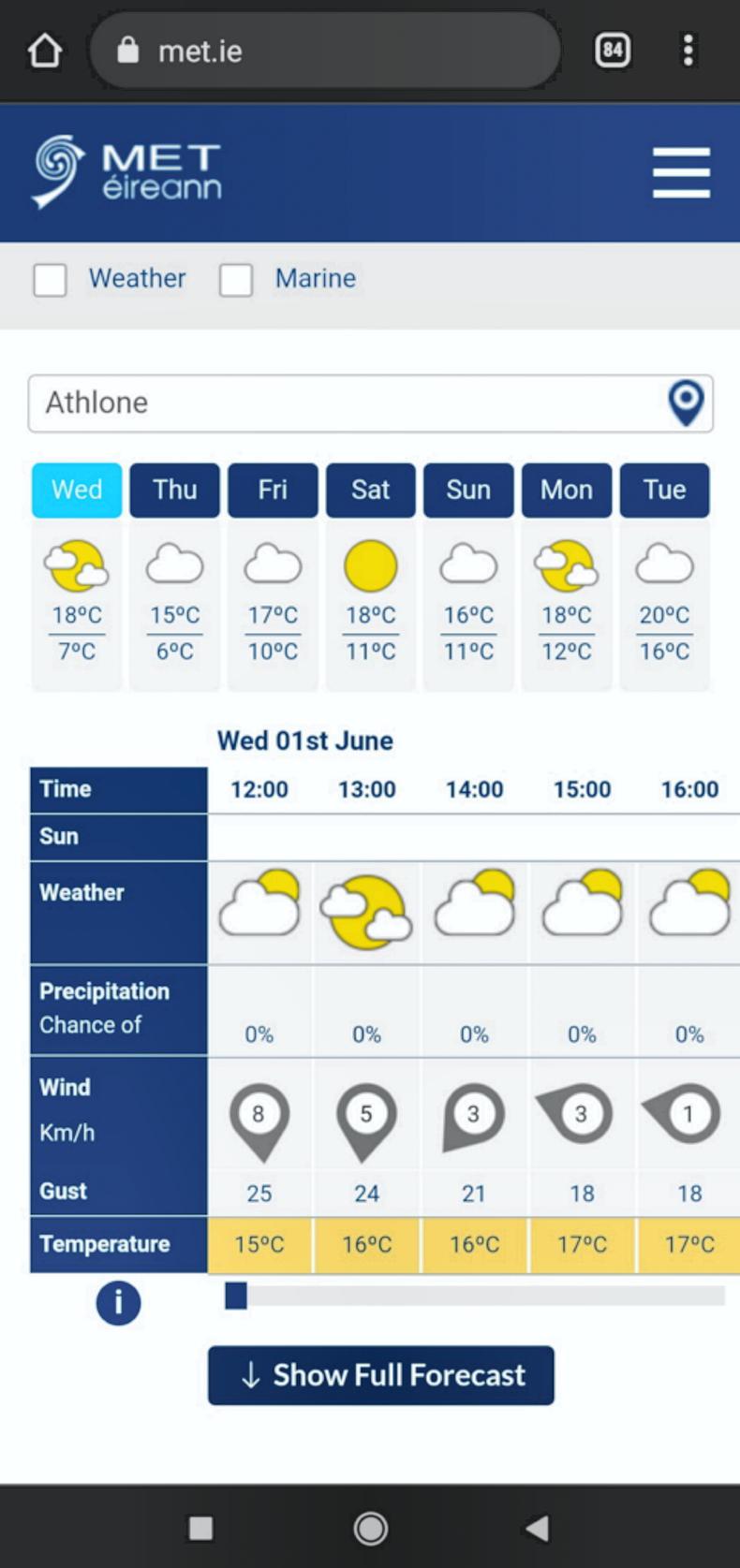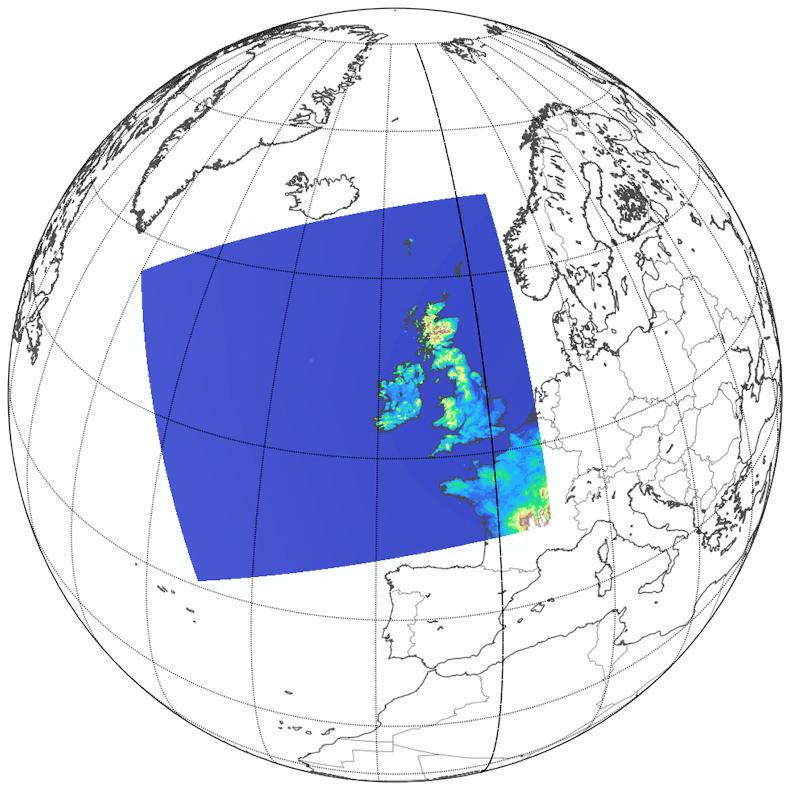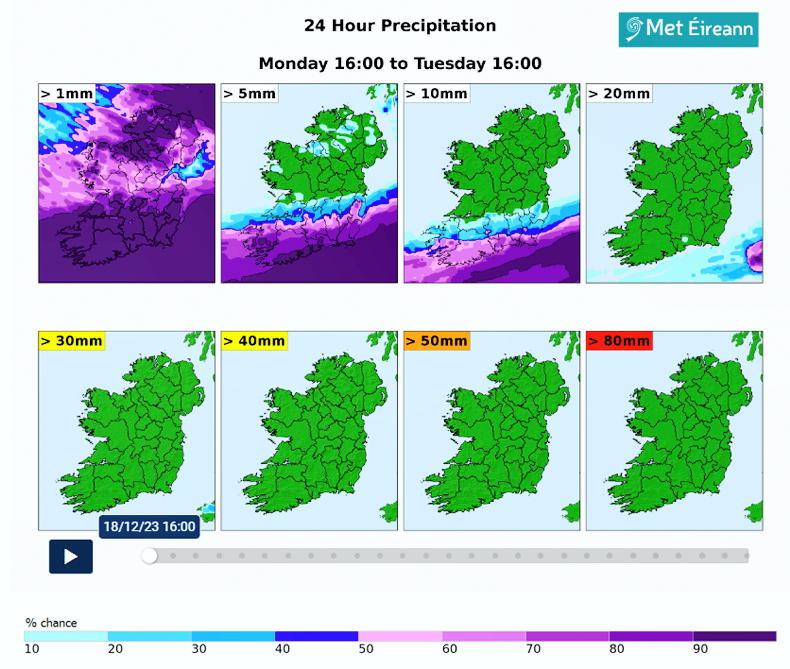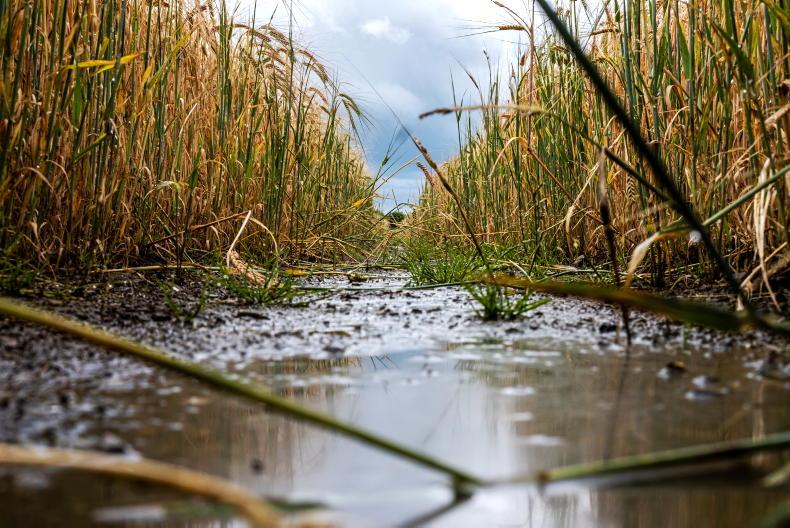For most Irish people, weather is a daily conversation point and our weather forecasting service (Met Éireann) plays an important role in people’s lives but it is critical for farmers and sea-goers.
In this three-part series, the Irish Farmers Journal spoke with Klara Finkele, who heads up the agricultural meteorology (AgMet) unit at Met Éireann, and we discussed some of the many changes to weather forecasting and how it is delivered to people in this digital era.
Klara commented that climate is a matter of historical record while, in meteorological terms, weather is what we experience currently and what is forecast to happen.
For those who live and work in the great outdoors, like farmers, fishermen, sailors, etc, this information can be critical to getting work done and can even threaten life.
So it is hardly surprising that people involved in these livelihoods see weather and weather forecasts as being critical to their livelihoods, occupations, or pastimes.
Our ability to forecast weather has improved considerably in recent years but accurate forecasting is still limited to around three days in the short term.
That said, forecasting has become more challenging in some ways in recent years as we experience severe weather and very heavy downpours.
For example, in 2023, there have been many heavy rain events, especially across the east and south during the growing season and some of these regions experienced significant flooding. This is also happening in other areas of the world like Pakistan.
The continuous development of technology has meant that the delivery of weather forecasts has also changed considerably in recent years.
Two decades ago, we had huge dependence on night-time TV forecasts and the morning radio forecast.
In recent years, we have seen a plethora of weather apps populate our smartphones.
Many of these now provide real-time radar and satellite images which add to an individual’s ability to interpret the immediate weather outlook.
However, while Met Éireann’s forecasts are now only one of many options to consider, the Met Éireann app is the only one which uses its in-house weather model, tuned specifically for Ireland, giving a local forecast for wherever you are located. See example in Figure 1.

Figure 1: Met Éireann's website viewed on a mobile phone, which provides a detailed weather forecast for wherever you are in Ireland.
The challenges of forecasting
Klara explained that weather everywhere in the world is heavily influenced by the envelope of gasses which surround the earth, which we refer to as the ‘atmosphere’.
Weather and weather forecasting are influenced by the air movements in this atmosphere. For this reason, any one region of the world is ultimately influenced by all others, but air movements are also altered by topography and the temperature of the surfaces beneath – both land and sea.
If we could have weather monitoring capacity on every 100km2 of the earth’s surface, we could probably monitor atmospheric air movements more easily to predict their consequences. However, this is not the case and the challenge of weather forecasting is exacerbated by the fact that just over 70% of the earth’s surface is covered by oceans.
However, access to satellite observations has helped greatly in the monitoring of air movement over the earth’s water surface. For us on the island of Ireland, the fact that our weather mainly sweeps in from the southwest means that we have no neighbours to ask what is happening out there before a front hits us.

Figure 2: The area covered by Met Éireann's HARMONIE model, which consists of 1,000 x 900 grid points horizontally at 2.5km resolution, with 65 vertical levels.
Forecasting for an island on the boundary between an ocean and a continental land mass has its own challenges. See Figure 2 for the level of details being observed.
A game of numbers
Modern forecasting involves making use of the huge volume of observations being measured in many other parts of Europe and across the globe.
Any forecast model relies on this observation data, including Met Éireann’s high-resolution short-range forecast model and the long-range forecast from the European Centre for Medium-Range Weather Forecasts (ECMWF).
Up to recently, our ability to generate forecasts at high spatial resolution was limited by computing power and the ability to take in this huge amount of data for assessment and modelling.
The observation data is taken in at the start of the model run and the model is run every three hours, and will soon be delivered every hour, to produce short- and/or long-range predictions every day.
The forecasts change, according to the newly observed data and the evolving weather situation.
Showers by their very nature can fall in one townland and not in the next and this will not change
Our ability to process data for forecasting has increased considerably in recent years, thanks to improved computing and data processing power.
Klara commented that Met Éireann can now produce multiple computer-model runs at the same time to help address uncertainties.
It also means that they now have the potential to assess the likelihood or risk of weather development down to a spatial resolution of 2.5km. Despite this, showers by their very nature can fall in one townland and not in the next and this will not change.
As well as improved forecasting capability, Klara said that Met Éireann is constantly improving its services and introducing new ways to deliver its information to the public.
With weather being so variable and seemingly more dangerous, it is increasingly important that those who are affected by weather conditions understand the many information options offered by Met Éireann and how to use them to best advantage.

Figure 3: Probability of rainfall exceeding certain thresholds, a new product available on the Met Éireann website https://www.met.ie/forecasts/ensemble-maps/
The State, through Met Éireann, has invested heavily in improved forecasting capability in recent years and much of this information is available to all citizens, and further afield via the internet.
This investment is also likely to result in the arrival of further new tools to deliver the forecast with the help of improved technologies in the years ahead.
Weather is a conversation opener for Irish people wherever they are. And, yet, our weather is relatively benign in that it is seldom life-threatening.
Contrast this with the weather in other parts of the world which we perceive to be ‘better’, or at least drier and warmer.
For those who have travelled to the midwest US, it would not go unnoticed that the TVs at hotel receptions always carry the local weather forecast. Because weather there can pose a real threat to life, the forecast is an essential hourly tool.
Tornadoes, hailstorms or floods can happen suddenly with devastating and deadly consequences and so society responds.
It is also interesting to travel in road vehicles where satnav systems also show weather developments overlaid live on the road network.
We will look more closely at the forecasting services provided to farmers and citizens that help us in our daily lives and seem set to be of further help in the years ahead.
For most Irish people, weather is a daily conversation point and our weather forecasting service (Met Éireann) plays an important role in people’s lives but it is critical for farmers and sea-goers.
In this three-part series, the Irish Farmers Journal spoke with Klara Finkele, who heads up the agricultural meteorology (AgMet) unit at Met Éireann, and we discussed some of the many changes to weather forecasting and how it is delivered to people in this digital era.
Klara commented that climate is a matter of historical record while, in meteorological terms, weather is what we experience currently and what is forecast to happen.
For those who live and work in the great outdoors, like farmers, fishermen, sailors, etc, this information can be critical to getting work done and can even threaten life.
So it is hardly surprising that people involved in these livelihoods see weather and weather forecasts as being critical to their livelihoods, occupations, or pastimes.
Our ability to forecast weather has improved considerably in recent years but accurate forecasting is still limited to around three days in the short term.
That said, forecasting has become more challenging in some ways in recent years as we experience severe weather and very heavy downpours.
For example, in 2023, there have been many heavy rain events, especially across the east and south during the growing season and some of these regions experienced significant flooding. This is also happening in other areas of the world like Pakistan.
The continuous development of technology has meant that the delivery of weather forecasts has also changed considerably in recent years.
Two decades ago, we had huge dependence on night-time TV forecasts and the morning radio forecast.
In recent years, we have seen a plethora of weather apps populate our smartphones.
Many of these now provide real-time radar and satellite images which add to an individual’s ability to interpret the immediate weather outlook.
However, while Met Éireann’s forecasts are now only one of many options to consider, the Met Éireann app is the only one which uses its in-house weather model, tuned specifically for Ireland, giving a local forecast for wherever you are located. See example in Figure 1.

Figure 1: Met Éireann's website viewed on a mobile phone, which provides a detailed weather forecast for wherever you are in Ireland.
The challenges of forecasting
Klara explained that weather everywhere in the world is heavily influenced by the envelope of gasses which surround the earth, which we refer to as the ‘atmosphere’.
Weather and weather forecasting are influenced by the air movements in this atmosphere. For this reason, any one region of the world is ultimately influenced by all others, but air movements are also altered by topography and the temperature of the surfaces beneath – both land and sea.
If we could have weather monitoring capacity on every 100km2 of the earth’s surface, we could probably monitor atmospheric air movements more easily to predict their consequences. However, this is not the case and the challenge of weather forecasting is exacerbated by the fact that just over 70% of the earth’s surface is covered by oceans.
However, access to satellite observations has helped greatly in the monitoring of air movement over the earth’s water surface. For us on the island of Ireland, the fact that our weather mainly sweeps in from the southwest means that we have no neighbours to ask what is happening out there before a front hits us.

Figure 2: The area covered by Met Éireann's HARMONIE model, which consists of 1,000 x 900 grid points horizontally at 2.5km resolution, with 65 vertical levels.
Forecasting for an island on the boundary between an ocean and a continental land mass has its own challenges. See Figure 2 for the level of details being observed.
A game of numbers
Modern forecasting involves making use of the huge volume of observations being measured in many other parts of Europe and across the globe.
Any forecast model relies on this observation data, including Met Éireann’s high-resolution short-range forecast model and the long-range forecast from the European Centre for Medium-Range Weather Forecasts (ECMWF).
Up to recently, our ability to generate forecasts at high spatial resolution was limited by computing power and the ability to take in this huge amount of data for assessment and modelling.
The observation data is taken in at the start of the model run and the model is run every three hours, and will soon be delivered every hour, to produce short- and/or long-range predictions every day.
The forecasts change, according to the newly observed data and the evolving weather situation.
Showers by their very nature can fall in one townland and not in the next and this will not change
Our ability to process data for forecasting has increased considerably in recent years, thanks to improved computing and data processing power.
Klara commented that Met Éireann can now produce multiple computer-model runs at the same time to help address uncertainties.
It also means that they now have the potential to assess the likelihood or risk of weather development down to a spatial resolution of 2.5km. Despite this, showers by their very nature can fall in one townland and not in the next and this will not change.
As well as improved forecasting capability, Klara said that Met Éireann is constantly improving its services and introducing new ways to deliver its information to the public.
With weather being so variable and seemingly more dangerous, it is increasingly important that those who are affected by weather conditions understand the many information options offered by Met Éireann and how to use them to best advantage.

Figure 3: Probability of rainfall exceeding certain thresholds, a new product available on the Met Éireann website https://www.met.ie/forecasts/ensemble-maps/
The State, through Met Éireann, has invested heavily in improved forecasting capability in recent years and much of this information is available to all citizens, and further afield via the internet.
This investment is also likely to result in the arrival of further new tools to deliver the forecast with the help of improved technologies in the years ahead.
Weather is a conversation opener for Irish people wherever they are. And, yet, our weather is relatively benign in that it is seldom life-threatening.
Contrast this with the weather in other parts of the world which we perceive to be ‘better’, or at least drier and warmer.
For those who have travelled to the midwest US, it would not go unnoticed that the TVs at hotel receptions always carry the local weather forecast. Because weather there can pose a real threat to life, the forecast is an essential hourly tool.
Tornadoes, hailstorms or floods can happen suddenly with devastating and deadly consequences and so society responds.
It is also interesting to travel in road vehicles where satnav systems also show weather developments overlaid live on the road network.
We will look more closely at the forecasting services provided to farmers and citizens that help us in our daily lives and seem set to be of further help in the years ahead.









 This is a subscriber-only article
This is a subscriber-only article











SHARING OPTIONS: